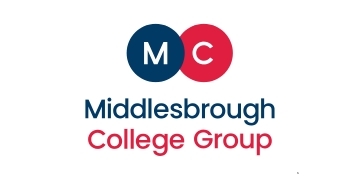With recruitment and retention presenting such a challenge for schools, a key lever at leaders’ disposal is long-term investment in teachers’ professional development. To get this right, it’s vital to consider our intended outcomes and to keep workload low and impact high – and traditional appraisal hinders this.
The pressure on schools is huge. A staggering 95 per cent of leaders in the most disadvantaged state-funded secondary schools have experienced recruitment difficulties this year. The last time we saw more than 90% of teachers remaining in the profession a year after qualifying was in the mid-90s. Change is clearly needed.
One of our ‘Trust Dividends’ is that we care about staff development, no matter the pay grade or position. But when we looked at how our policies and practices were supporting this, we found appraisal wasn’t helping us achieve this aim.
Why should it? Appraisal is a tool that exists chiefly to hold staff to account. While there’s certainly a place for accountability, there are better mechanisms for it.
Making the bold move from teacher appraisals to professional development reviews (PDRs) in our trust has enabled us to focus on what matters: staff development. No judgement, no pointless projects, no one-off events.
Research shows that prioritising teachers’ development and professional growth is effective in supporting retention. In switching to a PDR model, we’ve gained a lever to achieve a systematic, bespoke approach to incremental and sustained teacher development.
To increase momentum and ensure a valuable process, we’ve put effort into securing staff buy-in through clear messaging, rigorous training, high-quality resourcing and ongoing support.
To begin this strategic shift to a more holistic staff development approach, we looked beyond our trust into successful models that increased staff confidence and improved classroom practice.
We obtained teacher, leader and trustee viewpoints to explore how to empower staff, determine a secure approach to implementation and identify training and tools to fulfil our mission: “Our students deserve to experience the best and we do this most effectively by working together”.
Staff morale and motivation are on the up
Following consultation, we established an implementation timeline, developed a process for self-review and mapped reviewee and reviewer training needs. Leaders determined teacher reflection on classroom practice to be the highest-leverage aspect of the new model.
After extensive discussion, we agreed on ten core self-review components linked to our teaching and learning handbook: classroom culture, planning and preparation, explanations, modelling, questioning, assessment, feedback and adaptive teaching, deliberate practice, retrieval practice and literacy.
We then developed statements for self-reflection using a RAG-rating approach (alongside criteria), helping to identify confidence levels and create a positive, motivating culture around staff development.
Using online forms, staff can easily share their self-reviews with reviewers to prepare for their PDR conversation. The whole process is premised on fostering open discussion about development areas without fear of judgement.
When these PDR conversations happen, the focus for reviewers and reviewees is on levers for improvement and appropriate CPD. Then, reviewers check in on reviewees’ progress throughout the year.
We launched PDRs with in-school leaders during the summer term alongside training and resources. They subsequently trained reviewers and reviewees in the approach.
Additionally, we developed an internal CPD hub which acts as a one-stop shop encompassing numerous resources including: PDR videos modelling the conversation, teaching and learning videos/modules and a directory of excellence.
The hub is a key tool to aid reflection on CPD needs to steer teachers towards appropriate provision.
An important part of this journey has been the staged approach (across a 10-month period) to consult, plan, train and implement, so that schools feel empowered to drive professional development, not feel done unto.
Ensuring that teachers understand why the approach is right and leaders actively champion collective messages has been key.
Feedback has been overwhelmingly positive. Staff morale and motivation are on the up. Staff like the self-reviews and reviewers are keen to signpost the best CPD to their teams.
All of which points to a virtuous cycle of improvement in which staff feel more valued and better supported. And that can only help to attract and hold on to our talent.












CPD in schools generally consists of teachers qualified and experienced to teach children delivering PGCE content to staff with PGCEs to meet their own appraisal targets. Then whatever is taught is not implemented because we spent our time in a meeting instead of lesson planning.
Every few years an article like this is posted, the process is slightly tweaked but mainly just renamed and the cycle begins anew. Consultants make a lot of money from this.
All in school CPD needs to be abolished and replaced with high quality courses at a University with people trained to teach adults. Give us Masters credits, some European countries do this.